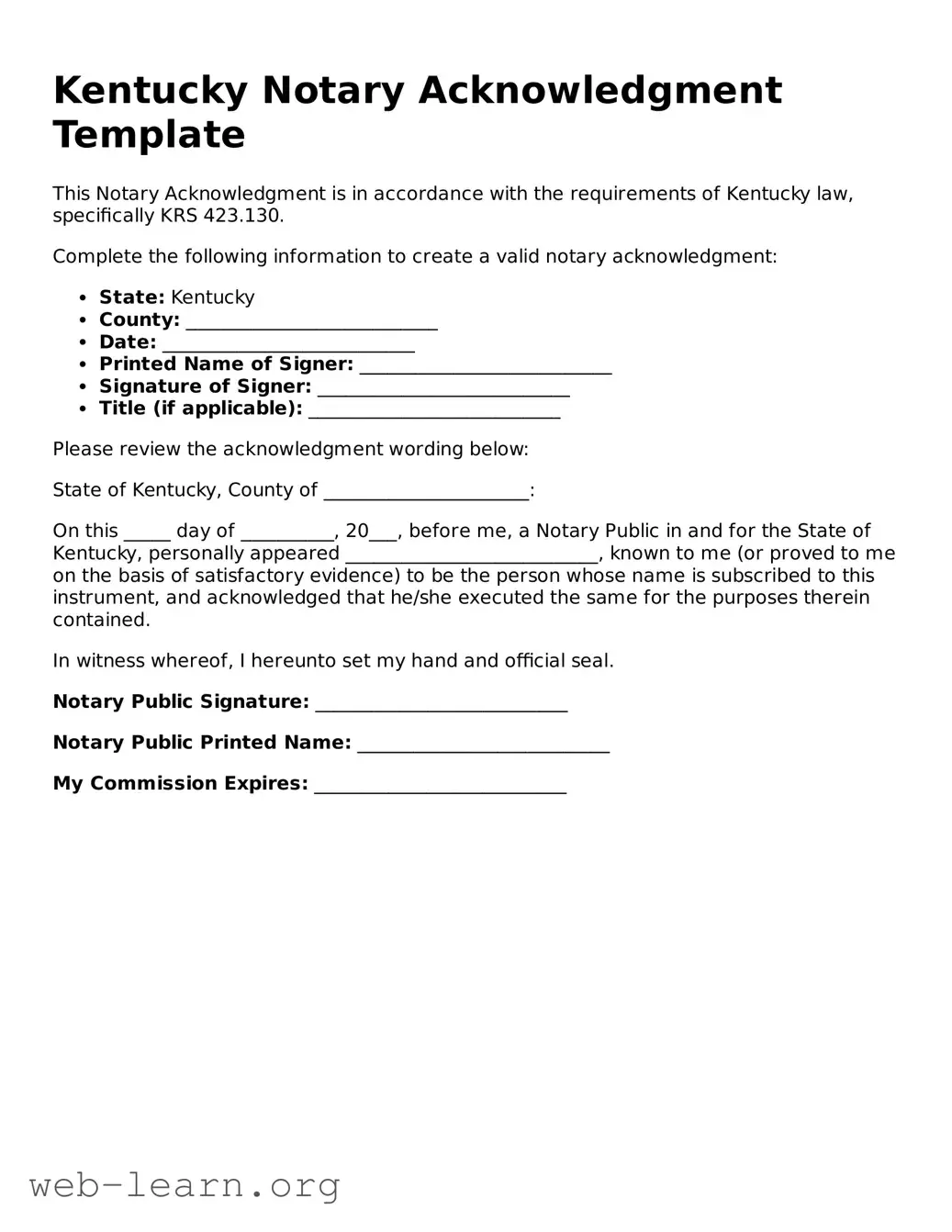Kentucky Notary Acknowledgment Template
This Notary Acknowledgment is in accordance with the requirements of Kentucky law, specifically KRS 423.130.
Complete the following information to create a valid notary acknowledgment:
- State: Kentucky
- County: ___________________________
- Date: ___________________________
- Printed Name of Signer: ___________________________
- Signature of Signer: ___________________________
- Title (if applicable): ___________________________
Please review the acknowledgment wording below:
State of Kentucky, County of ______________________:
On this _____ day of __________, 20___, before me, a Notary Public in and for the State of Kentucky, personally appeared ___________________________, known to me (or proved to me on the basis of satisfactory evidence) to be the person whose name is subscribed to this instrument, and acknowledged that he/she executed the same for the purposes therein contained.
In witness whereof, I hereunto set my hand and official seal.
Notary Public Signature: ___________________________
Notary Public Printed Name: ___________________________
My Commission Expires: ___________________________
